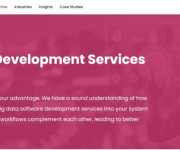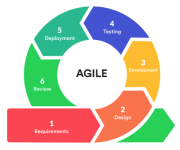How Can You Use User Intent to Your Advantage?
When working with a marketing agency in Sydney, you probably heard them mention user or search intent as one of the ways to boost your rankings in search engines. As one of the ranking factors or metrics used in search engine optimization, understanding user intent will definitely help you create valuable content for your target market.
Understanding User Intent
Also known as search intent or audience intent, user intent refers to the “why” of a search query. People don’t just type an online query for no reason, and understanding the intent behind a query will help in optimising content for search.
- If search queries are the words or phrases users type in on a browser to pull up a list of search results, intent is the reason behind such a query. More often than not, they’re trying to find an answer for the question or keyword they typed in.
- It’s one way for marketers or website owners to understand the goal behind every query. Is the user searching for more information, shopping, or looking for directions?
Types of Search Intent
Informational Search
- Informational search or information intent happens when a user wants to learn something new, gather more information, or expand their research.
- This is often considered the first step of the search funnel where potential customers are still looking for more details to help them come up with an informed decision.
- Most informational search uses modifiers, such as who, what, when, how, tips, and guide. A clear example is the common question, “Can you tell me a bit about yourself?”
Commercial Search
- A step above information intent, commercial search intent is when a user wants to hone in on a specific product or service.
- This is where the query includes comparisons and reviews, using search modifiers such as best, versus, and top.
Transactional Search
- Transactional search intent is when people are now ready to convert or make a purchase. Using information and the specifics gathered, their search terms may include cheap, buy, order, or coupon.
- When optimising for transactional search, your content should use the same modifiers and should be designed to provide the best user experience.
Navigational Search
- As the name suggests, navigational search intent is used by someone looking for a specific thing not necessarily a direction. Someone who types in “Logitech mouse,” for example, may be ready to buy or looking for more information.
- Most navigational intent is followed by a specific action. This is why navigational searches work best for first-party domains.
How to Understand Your Specific Users’ Intent
There are several ways and tools that you can use to identify user search intent, helping you optimize content accordingly.
Research Tools
- Keyword research tools like Google Analytics have helped many online businesses deliver valuable content to their users. They offer the simplest method to understand the intent behind a specific search term.
- Research tools offer convenience and accessibility, but they’re not always accurate. It’s best paired with other strategies designed to better identify search intent.
SERP Features
Certain features of search engine results pages can help you determine different intent behind different queries.
- Featured snippets, knowledge graphs, and news, for example, are often opened and visited by people looking for general or high-level information. Most of them are on the informational search intent level.
- When someone frequents popular products or uses the Refine by search result feature, they’re on the commercial search intent level. They already know what they want but need more detailed information.
- Directions, job pack, and map results are the SERP features often used at a transactional intent level.
- If someone is searching for specific information about a product or place, sitelinks are their go-to search result feature.
Study the Results Page
- Type in any search query and examine the search results. Look for clues based on organic listings, knowledge graph results, and paid ads.
- While the search results don’t give you the actual intent behind a query as data analytics would, it will provide you with a clearer direction in content development.
In addition, examine your content’s analytics. If the bounce rate is higher, a user may not find the content helpful at all or that it aligns with their search intent. If you need help to better understand this metric and other ranking factors, let Barking Dog guide you on the most efficient way to succeed with your digital marketing.
























